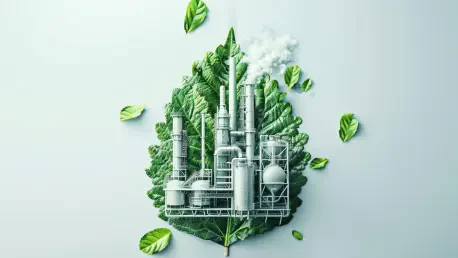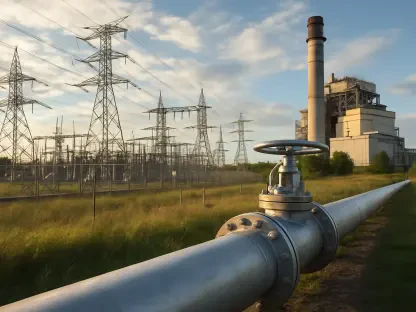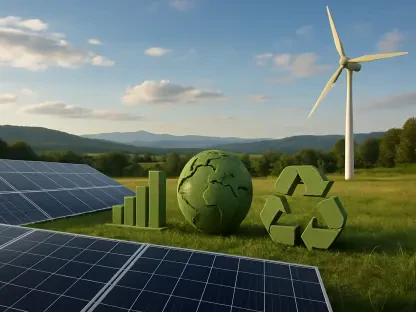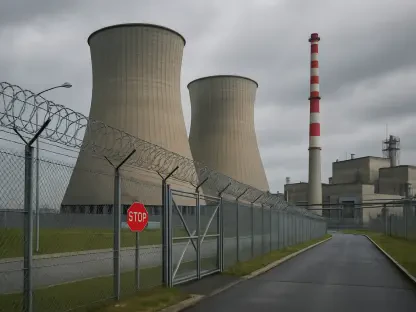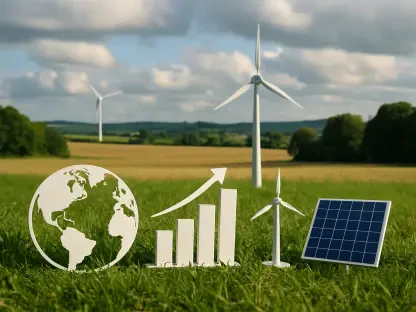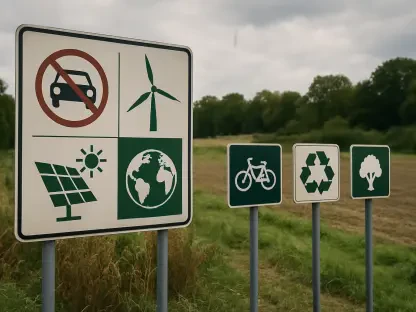Amidst the world’s ongoing transition to clean energy, an intriguing debate emerges as societies grapple with the critical challenge of finding land for utility-scale solar and wind farms. These renewable energy sources, though environmentally beneficial, necessitate ten times more land compared to traditional fossil fuel plants. This creates a dilemma where energy production begins overlapping with agricultural spaces, raising the pressing question of balancing energy and food security. A focal point within this debate is the conversion of biofuel-dedicated land, especially that used for corn ethanol in the U.S., into solar farms. Advocates for this conversion argue that such lands could more efficiently contribute to the energy matrix while potentially addressing food scarcity concerns. This transition, supported by studies such as those published in PNAS, suggests that repurposing even a marginal percentage of these biofuel lands to solar farms can deliver energy outputs equivalent to those achieved by all corn ethanol production while simultaneously boosting solar energy’s contribution to the national energy profile.
The Dual Functionality of Solar Farms
Solar farms have evolved significantly, offering models such as “agrivoltaics,” allowing agriculture and renewable energy production to coexist. Agrivoltaics presents a win-win scenario by utilizing the same plot of land to harvest both solar energy and crops. This system mitigates the food-versus-energy conflict as crops receive shade from solar panels, which can improve plant health and yield due to reduced water evaporation and protection from heat stress. The cooling effect of plant transpiration also boosts solar panel efficiency, demonstrating a harmonious integration of technology and nature. Moreover, converting biofuel lands to solar farms not only aids in achieving energy goals but also ensures the sustainable use of land resources. By integrating this approach, stakeholders in the energy and agricultural sectors can explore substantial synergies, enhancing energy production without jeopardizing food security. The efficient and sustainable management of these systems becomes pivotal in addressing the intricate challenge of energy and food production.
Salvation in Bioconversion
European studies highlight another promising dimension: transforming biofuel land to food production while advocating carbon sink potential. These studies assert that agriculture for biofuel can be inefficient regarding land use, which could be redirected to better serve food production needs or environmental restoration. If lands currently committed to biofuel production are to revert to growing food crops, millions more could be fed, alleviating pressures from rising food demands. Additionally, the incorporation of these lands into natural carbon sinks promises significant ecological benefits, such as improved biodiversity and climate stability. This reevaluation of land use foregrounds the inefficiencies of biofuel agriculture and accentuates the potential of repurposing these lands for more beneficial purposes. Balancing food with renewable energy output poses a complex challenge, necessitating thoughtful and strategic redirection based on empirical evidence. By considering these factors, it becomes conceivable to reshape land use for broader environmental and societal benefits.
Rethinking Land Allocation
Acknowledging the current uses of agricultural land, particularly for biofuel, demands a reevaluation to address inefficiencies and optimize benefits. Transitioning these lands to solar farms involves understanding the broader implications for both energy and food production, navigating the complexities of renewable energy infrastructure while safeguarding agriculture. While shifting to solar infrastructure promises environmental and energy benefits, responsible management is critical to preventing adverse effects such as land degradation or loss of biodiversity. Concurrently, redirecting biofuel lands aims to boost food security by mitigating competition for agricultural resources, as exemplified by findings in Europe. These insights highlight the need to reassess land allocation strategies, aligning them seamlessly with a sustainable future. The balance of energy production with food security relies on innovative practices that embrace technological advancements while respecting ecological principles. The pursuit of effective land use policies becomes crucial in charting a sustainable path forward, ensuring long-term benefits for energy, food production, and the environment.
Embracing a Sustainable Future
As the world shifts toward green energy, a compelling debate surfaces over the challenge of securing land for large-scale solar and wind installations. Although these renewable sources are beneficial for the environment, they require nearly ten times more land than traditional fossil fuel plants. This creates a potential conflict between energy production and agriculture, prompting serious discussions on how to balance energy needs with food security. Key to this debate is the idea of converting land currently used for biofuel production, particularly corn ethanol sites in the U.S., into solar farms. Supporters of this conversion claim that such lands could better contribute to the energy sector while simultaneously addressing concerns about food shortages. Research, including findings published in PNAS, indicates that redirecting even a small portion of biofuel land to solar farms could match the energy output of all U.S. corn ethanol production and enhance solar energy’s role in the nation’s energy landscape.
